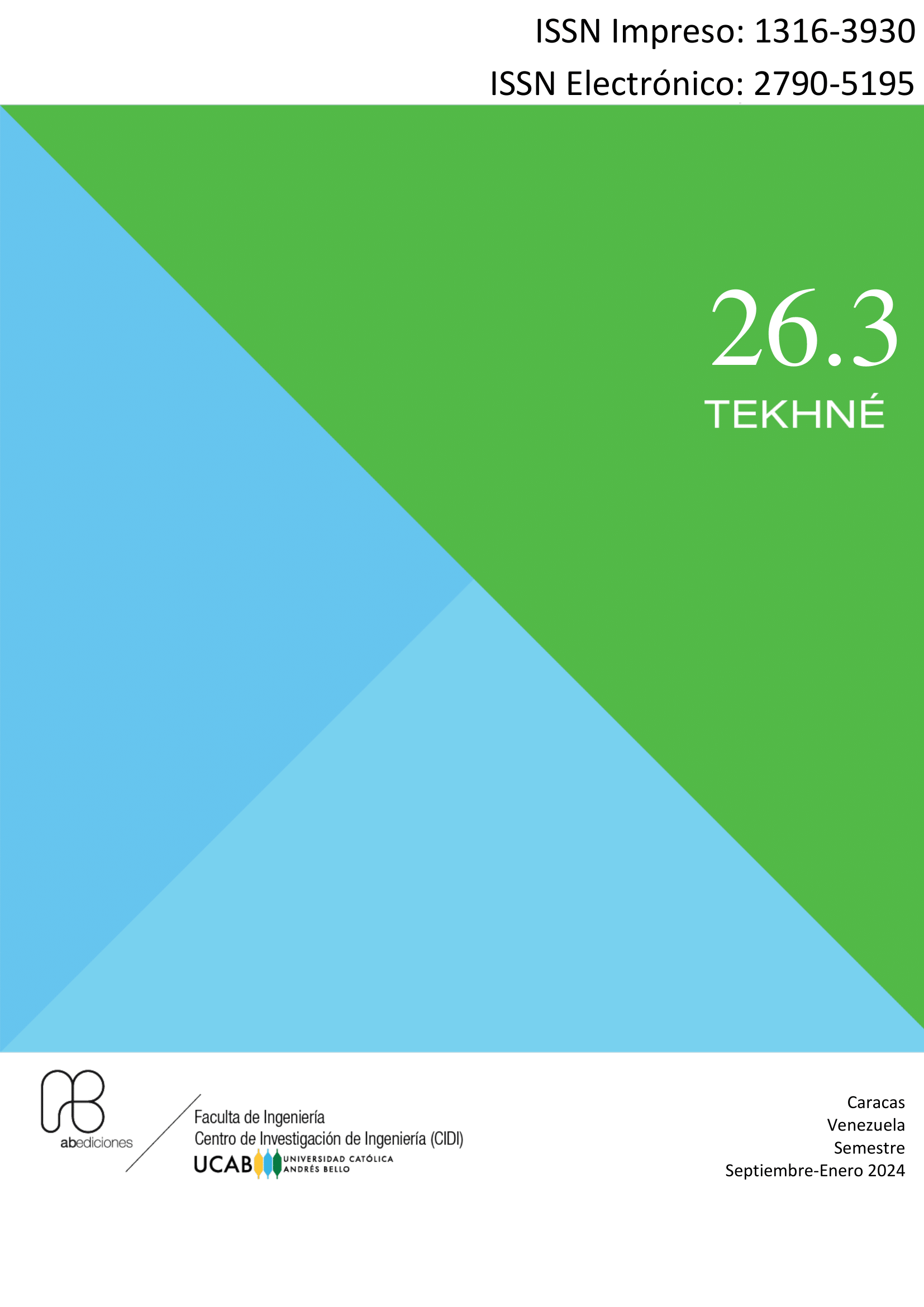Napping sensory methodology for assessment of fruit beverages formulated with stabilizers
DOI:
https://doi.org/10.62876/tekhn.v26i3.6307Keywords:
Global napping, stabilizing effect, interaction between phases, fruit pulp formulation, physical-sensory balanceAbstract
In this research, the Napping sensory methodology was applied combined with the ultra fast profile (UFP) in order to evaluate the sensory similarities and differences generated in soursop and pineapple drinks by stabilizers. Three stabilizers were used, xanthan gum, carboxymethylcellulose (CMC) and a mixture of gums at concentrations of 0,1% and 0,5% in the formulations of the soursop and pineapple pulps that served as the basis for the preparation of the 8 drinks that they were evaluated by 23 untrained panelists. It was evidenced that the use of stabilizers generated an effect on the sensory attributes that described the similarities and differences of each of the samples with respect to the control samples (without stabilizer). The interaction of the structures that form stabilizers with the morphological characteristics of each fruit delayed undesirable physical changes in these beverages. However, the samples with 0,1% stabilizers demonstrated a better balance between the stabilizing effect, the non-alteration of the sensory attributes and the similarity to the control sample. In both products, the gum mixture was more compatible due to its location close to the control sample, but this characteristic and desirable attributes in the drinks also made the xanthan gum at 0,1% acceptable for the soursop drink and the CMC at 0, 1% for the pineapple drink.
Keywords: Global napping, stabilizing effect, interaction between phases, fruit pulp formulation, physical-sensory balance.
Downloads
References
C. Rollin, “Stabilizers: Types and Function”. In: Benjamin Caballero, Paul M. Finglas andFidel Toldra, Encyclopedia of Food and Health, Academic Press, Kidlington, Oxford, pp. 124-127, 2016.
M. Krempel, K. Griffin, andH. Khouryieh, “Hydrocolloids as emulsifiers and stabilizers in beverage preservation”. In Alexandru, Grumezescu & Alina M. Holban, “Preservatives for the beverage industry”, Woodhead Publishing, Cambridge, UK, pp. 427-465, 2019.
A. Hajmohammadi, M. Pirouzifard, M. Shahedi, andM. Alizadeh, “Enrichment of a fruit-based beverage in dietary fiber using basil seed: Effect ofCarboxymethyl cellulose and Gum Tragacanth on stability”. LWT -Food Science and Technology, vol. 74, pp84-91, 2016.
M. Sharma, E. Kristo, M. Corredig, andL. Duizer, “Effect of hydrocolloid type on texture of pureed carrots: Rheological and sensory measures. Food Hydrocolloids”, vol. 63, pp.478-487, 2017.
R. Lv, Q. Kong, H. Mou, and X.Fu,“Effect of guar gum on stability and physical properties of orange juice”. International of Biological Macromolecules, vol. 98, pp.565-574, 2017.
G. Ares, P. Varela, G. Rado, andA. Giménez, “Are consumer profiling techniques equivalent for some product categories? The case of orange-flavoured powdered drinks”. International Journal of Food Science and Technology vol.46, pp.1600-1608, 2011.
M. O ́Sullivan,“Salt, Fat and Sugar Reduction. Sensory Approaches for Nutritional Reformulation of Foods and Beverages”. Woodhead Publishing, Cambridge, UK, pp. 183-213, 2020.
P. Varela, andG. Ares, “Sensory profiling, the blurred line between sensory and consumer science. A review of novel methods for product characterization”. Food Research International, vol. 48, no. 2, pp.893-908, 2012.
C. Dehlholm, “Projective Mapping and Napping”. In: Paula Varela & Gastón Ares, Novel Techniques in Sensory Characterization and Consumer Profiling, CRC Press, Boca Ratón, pp.229-251, 2014.
E. Horváth, andM. Stéger,“Manufacturing fruit beverages and concentrates”. In: Nirmal, Sinha, Jiwan, Sidhu, Jozsef, Barta, James, Wu, & M. Pilar, Cano, Handbook of Fruitsand Fruit Processing, John Wiley & Sons, Ldt, UK, pp.213-228, 2012.
P. Williams,“Gums: Properties and uses”. In: Benjamin Caballero, Paul M. Finglas & Fidel Toldra, Encyclopedia of Food and Health, Academic Press, Kidlington, Oxford, pp. 283-289, 2016.
R. Ergun, J. Guo, andB. Huebner-Keese,“Cellulose”. In: Benjamin Caballero, Paul M. Finglas & Fidel Toldra, Encyclopedia of Food and Health, Academic Press, Kidlington, Oxford, pp. 694-702, 2016.
J. BeMiller,“Carbohydrate Chemistry for Food Scientists”. Third Edition. Woodhead Publishing, Cambridge, UK, pp. 241-252, 2019.
Y. Ni, Z. Zhang, L. Fan, andJ. Li,“Evaluation of physical stability of high pressure homogenization treatment cloudy ginkgo beverages”. LWT -Food Science and Technology vol.111, pp.31–38, 2019.
E Lozano, J. Salcedo, and R.Andrade, “Evaluation of yam (Dioscorea rotundata) mucilage as a stabilizer in the production of mango néctar”. Heliyon,vol.6, pp. 1-7, 2021.
B.Castulovich, andJ. Franco, “Efecto de agentes estabilizantes en jugo de piña (Ananas comosus) y coco (Cocos nucifera L.) edulcorado”. PRISMA Tecnológico vol. 9, no.1, pp. 21-25, 2018.
M. Gössinger, S. Buchmayer, A. Greil, S. Griesbacher, E. Kainz, M. Ledinegg, M. Leitner, A. Mantler, K. Hanz, R. Bauer, andM. Graf, “Effect of xanthan gum on typicity and flavour intensity of cloudy apple juice”. Journal Food Processing and Preservation, pp.1-5, 2018
J. Liu,M.S.Grønbeck, R. Di Monaco, D. Giacalone, and W.LPBredie, “Performance of Flash Profile and Nappingwith and without training for describing small sensory differences in a model wine”,Food Quality and Preference, vol. 48, pp.41–49, 2016
P. Varela,and G.Ares, “Sensory profiling, the blurred line between sensory and consumer science. A review of novel methods for product characterization”,Food Research International, vol., 48, no.2, pp.893-908, 2012
H.C.Reinbach, D.Giacalone, L.M.Ribeiro, WLP Bredie,and M.B. Frøst,“Comparison of three sensory profiling methods based on consumer perception: CATA, CATA with intensity and Napping®”. Food Quality and Preference, vol. 32,pp. 160–166, 2014.
M.N. Ribeiro,D.M.Rodrigues, R.A. Reis Rocha, L.R.Silveira,J.P.Ferreira Condino, A.C. Júnior, and A.C.Marques Pinheiro. Optimising a stevia mix by mixture design and Napping: a case study with high protein plain yoghurt. International Dairy Journal, vol. 110,104802,2020.
M. O ́Sullivan, M. A Handbook for Sensory and Consumer-Driven New Product Development. Woodhead Publishing, Cambridge, UK, pp. 103-123, 2017.
Downloads
Published
How to Cite
Issue
Section
License
Copyright (c) 2023 Tekhné

This work is licensed under a Creative Commons Attribution-NonCommercial-ShareAlike 4.0 International License.




